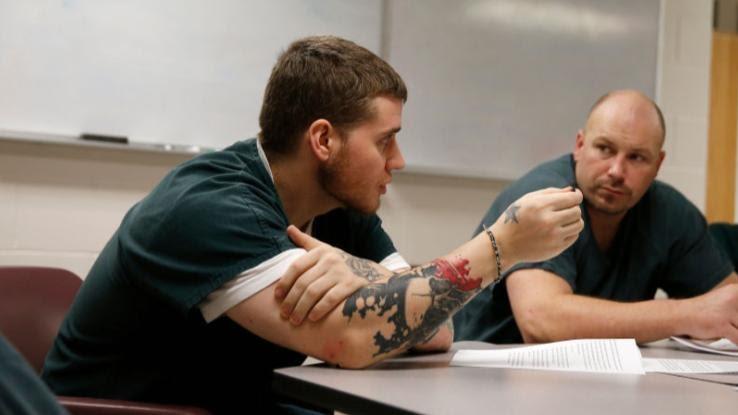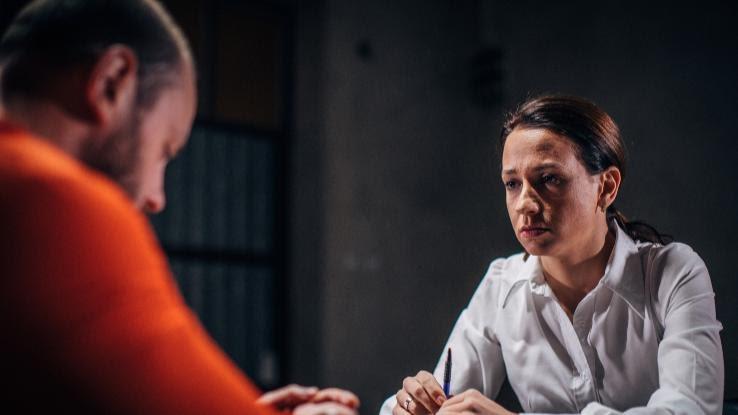What Are the Pros and Cons of Restorative Justice?

Restorative justice is a framework that emphasizes and pursues the long-term strengthening and rebuilding of communities and families affected by crimes. It affords young offenders — those under age 18 — alternative solutions for corrective actions beyond options available in standard justice systems. Some of the advantages of restorative justice include focusing attention on victims rather than perpetrators, promoting problem-solving strategies and stimulating communication. Perceived disadvantages include a failure to prevent future crimes and a similar failure to impose penalties. The approach has its fair share of proponents and critics, but exactly how well does this approach work in achieving its goals?
What Is Restorative Justice & How Does Restorative Justice Work?
As described by the Restorative Justice Council, “Restorative justice gives victims the chance to meet or communicate with their offender to explain the real impact of the crime — it empowers victims by giving them a voice. It also holds offenders to account for what they have done and helps them to take responsibility and make amends.” The organization further explains that this approach often involves conferences that allow victims to meet offenders face to face and participate in a discussion together.

The idea behind restorative justice is not to excuse offenders from the consequences of their actions or for them to obtain forgiveness but to provide an opportunity for the victim and offender to communicate. Victims may feel as though they don’t have the chance to engage in meaningful forms of participation in the justice process, and restorative justice allows them to get involved or potentially learn information that can help them recover from their experience with an offender.
In the case of non-violent or minor offenses, restorative justice may provide an opportunity to deal with a case outside of court. In other situations, the justice system will proceed forward with scheduled hearings, but restorative justice will be utilized as a supplement to that process. Some judges may allow an opportunity for restorative justice before sentencing, while others consider working a form of restorative justice into a community service sentence for an offender.
In more serious situations in which the offender is sent to prison, restorative justice might happen either during their sentence or after their release. It may occur through a monitored conference in a safe environment, through letters, or through recorded interviews or videos.
Benefits of Restorative Justice
In the traditional justice system, victims of crimes rarely have the opportunity to communicate with the offenders who harmed them. This reality sometimes leaves them with questions they wish they could ask the offender or things they wish they had the opportunity to say to gain closure or catharsis.

Likewise, offenders don’t always have the chance to face personal accountability when it comes to hearing firsthand how their actions affected their victims. Sometimes offenders may even wish they had an opportunity to apologize or explain the circumstances surrounding their actions.
Restorative justice is meant to provide both sides with a chance for closure. The Centre for Justice and Reconciliation explains the three main goals of the restorative justice process:
- Repair: Rather than simply dealing with crime in a clinical way, restorative justice acknowledges that it causes real harm to real people and real communities, helping everyone involved better understand a holistic view of the effects of crime.
- Encounter: By bringing the victim and offender together in a safe way, the offender is given the chance to make amends rather than only deal with the legal consequences of their actions.
- Transformation: The restorative process is designed to help bring about transformation in both parties. Some studies have indicated that restorative justice methods are more effective in improving victim-offender satisfaction, increasing the likelihood that the offender will comply with consequences or restitution, and decreasing the chance that offenders will reoffend in the future.
Disadvantages of Restorative Justice
While it may offer certain benefits, there are also limits to what restorative justice can accomplish. One major example lies in the case of violent crimes. This is an area where facts and emotions can become complicated very quickly, depending on the circumstances.

In the case of a violent crime in which the victim and offender knew each other before the incident took place, the victim may want no further contact with the offender. In cases in which violence became a pattern, such as in a domestic abuse situation, attempts at preserving a toxic victim-offender relationship may be much more dangerous than potentially helpful.
Restorative justice also assumes that the offender is remorseful and willing to make amends, which may not always be true. In the case of in-person meetings, even if they’re monitored, there’s always the possibility that communications will deteriorate and cause the victim additional emotional or mental trauma.
On the other hand, even if the offender is remorseful, there’s no guarantee that the victim will be open to receiving an apology. Things may take a very different turn, and the victim or victims may interrogate the offender in a way that doesn’t turn out to be beneficial.
In instances of minor crimes, sometimes attempts at restorative justice may lead to a criminal receiving a lighter sentence or avoiding a criminal record altogether. Whether or not this is just can vary on a case-to-case basis.
Restorative Justice Programs
Currently, a variety of countries around the world are experimenting with restorative justice programs. In North America, such programs have arisen out of interest in traditions similar to those first developed by Native Americans and First Nations groups. The roots of restorative justice in Indigenous cultures are also gaining recognition in places such as Africa and in the Pacific Rim region. Experimental restorative justice programs have also been tested in Latin America, the Middle East and Asia.

To date, many of the more popular restorative justice programs have revolved around cases involving juvenile offenders and family service cases. They’ve been helpful in not only allowing victims and offenders to move forward but also in allowing both parties to agree on an amends process that provides appropriate restitution, such as financial compensation or community service.
Restorative Justice in Schools
Restorative justice has also been demonstrated to work well when effectively implemented in schools. As opposed to simply suspending students or sending them to detention, some schools have tried incorporating restorative justice processes that get to the heart of negative behavior.

Shane Safir, a writer and coach, describes the process thusly: “Restorative justice (RJ) is a powerful approach to discipline that focuses on repairing harm through inclusive processes that engage all stakeholders. Implemented well, RJ shifts the focus of discipline from punishment to learning and from the individual to the community.”
In a school setting, restorative justice might take several forms, including:
- Talking with students and asking them to reflect on the consequences of their behavior
- Asking students questions about their behavior instead of “lecturing”
- Engaging in supervised mediation between two students that’s overseen by school staff members or a group of peers
Restorative Justice Examples
As you research restorative justice in action, you’ll come across a number of moving stories about people whose lives’ the process has impacted in a meaningful way. Among them is the story of an ex-convict named Cachene, who joined a restorative justice program called Circle of Support and Accountability (CoSA) after getting out of prison. Despite initially being nervous about life after prison, the program offered him the support he needed to get back on the right track. Now he gives back to his community by sharing his story with young offenders in an effort to keep them from making the same mistakes.

Another man, named Robert, took part in a restorative justice program called the Sycamore Tree Project while in prison in Australia. He remarked, “This is the first time that I’ve ever done anything behind bars that has made me think about what I’ve actually done, not ‘what am I going to do to stay out of trouble,’ not ‘how am I going to get myself out of here.'”
One unnamed victim who participated in the process described the emotional benefits restorative justice provided: “[My abuser] said he couldn’t understand why I’d want to forgive him. I told him it was because I didn’t want to carry around what he’d done to me any more. I’d moved on, and forgiving him was for me, not for him. I wanted an apology, and I got one… Without restorative justice I’d have struggled to move on with my life.” For more inspiring stories from participants, visit the Centre for Justice and Reconciliation website.





